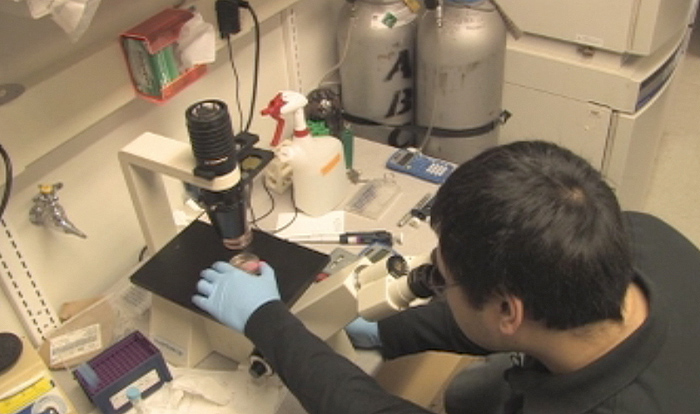Scientists at the University of Connecticut Health Center are using stem cell technology to replenish damaged cells that result from a heart attack.
Their pioneering research – funded in part by a grant from the state’s $100 million program to fund stem cell scientists – uses a molecule known as CD13 that plays an important role in the body’s way of repairing itself after an injury.
When a person is injured, the body sends cells to the site of the injury to protect it. In a heart attack, for example, the body sends stem cells – the building blocks for every type of cell in the body capable of maturing into any tissue type – to the heart to begin replacing the damaged tissue. If that process doesn’t work well enough, the person can develop heart failure.
But the repair cells need a way to know where to go. That’s where CD13 comes in; it helps guide cells intended for repair to the proper place.

At UConn’s Health Center, Drs. Linda Shapiro, director of the Center for Vascular Biology, and Bruce Liang, chief of UConn’s cardiology division, are testing whether adding more CD13 to stem cells helps better guide them to the damaged heart.
Using mice that have been bred without CD13 and mice with the molecule, the researchers induced heart attacks in both groups to compare the results. Approximately 80 percent of the mice in both groups survived, but those without CD13 ended up with markedly poorer heart function. “It just seems that without CD13, the function is impaired,” Shapiro said.
Shapiro and Liang think that adding more CD13 to stem cells could help make sure they are guided to the damaged heart, and potentially improve the chances for recovery.
Ultimately their work could lead to the development of a way to inject CD13-fortified stem cells into heart attack patients, boosting the body’s own way of repairing damaged heart tissue. Through the use of stem cells, they say, science could bring about a radical change in the treatment of heart failure, the cost of which runs to $30 billion a year.
“We may avoid the problem of heart failure by replenishing the heart with new cells,” said Liang. “We hope to translate some of the basic findings into clinical utility, in this case, a new cure for heart failure.”


